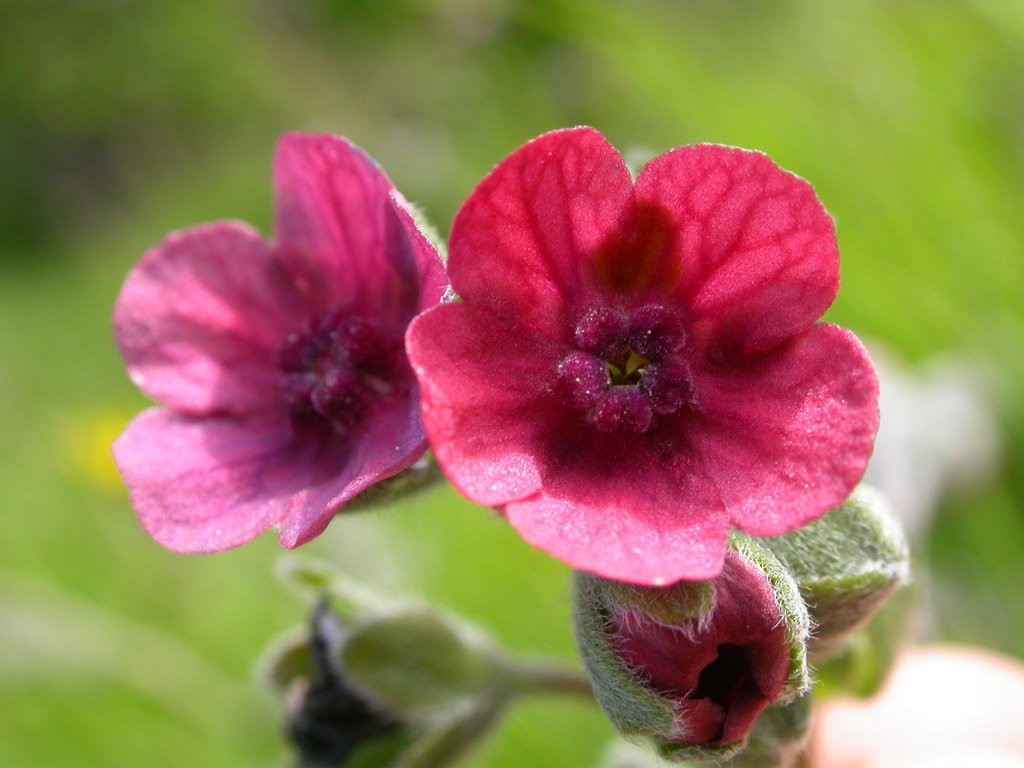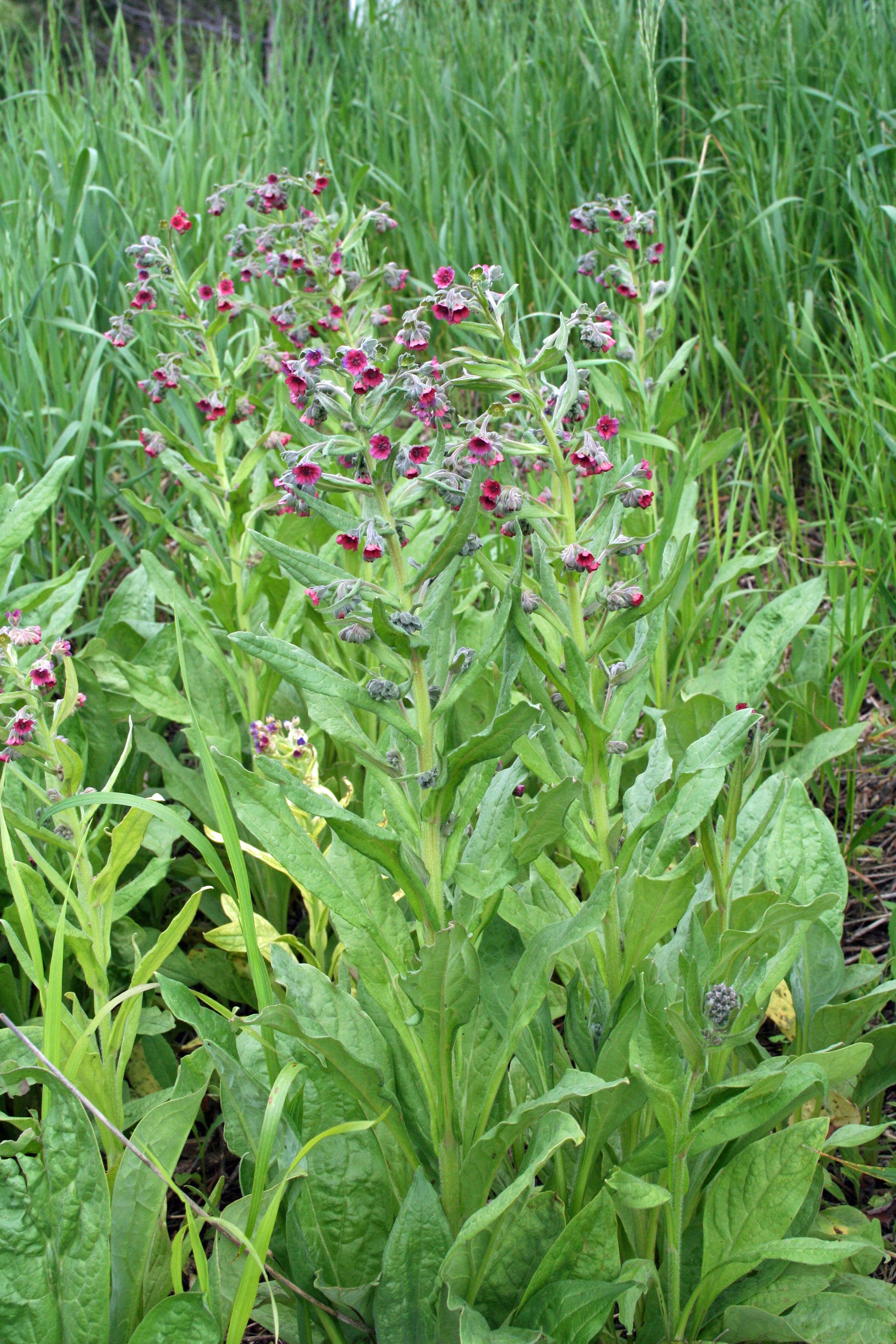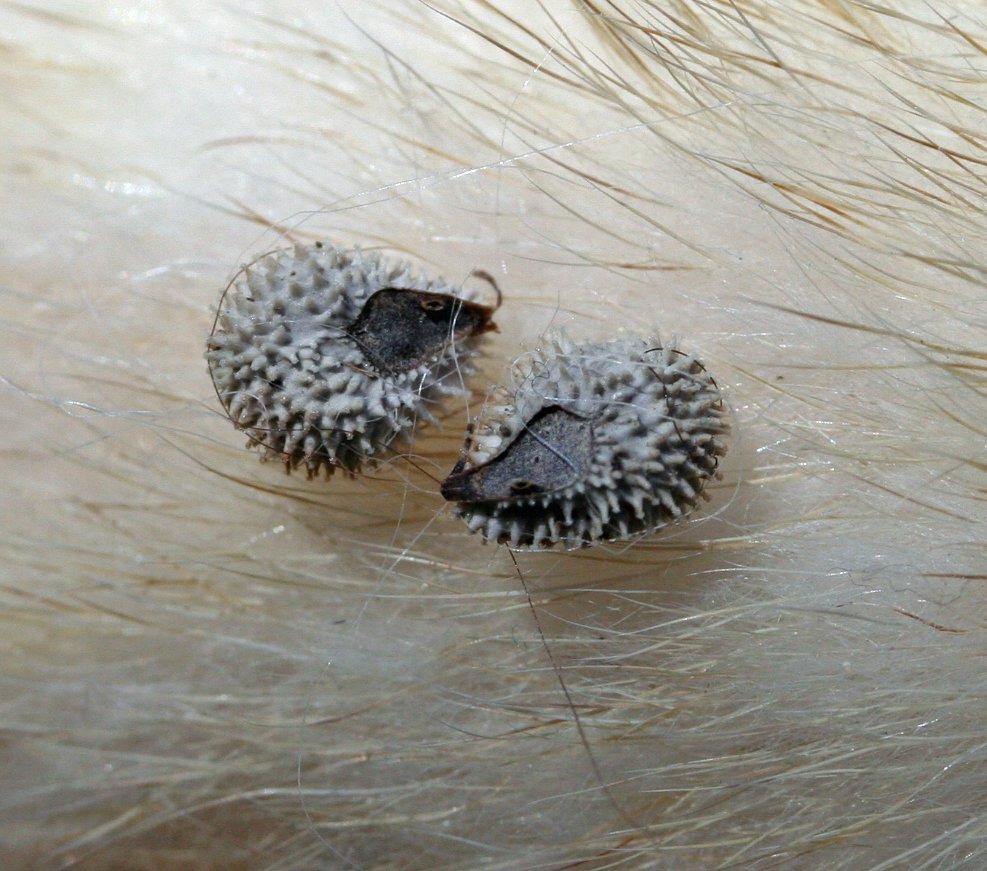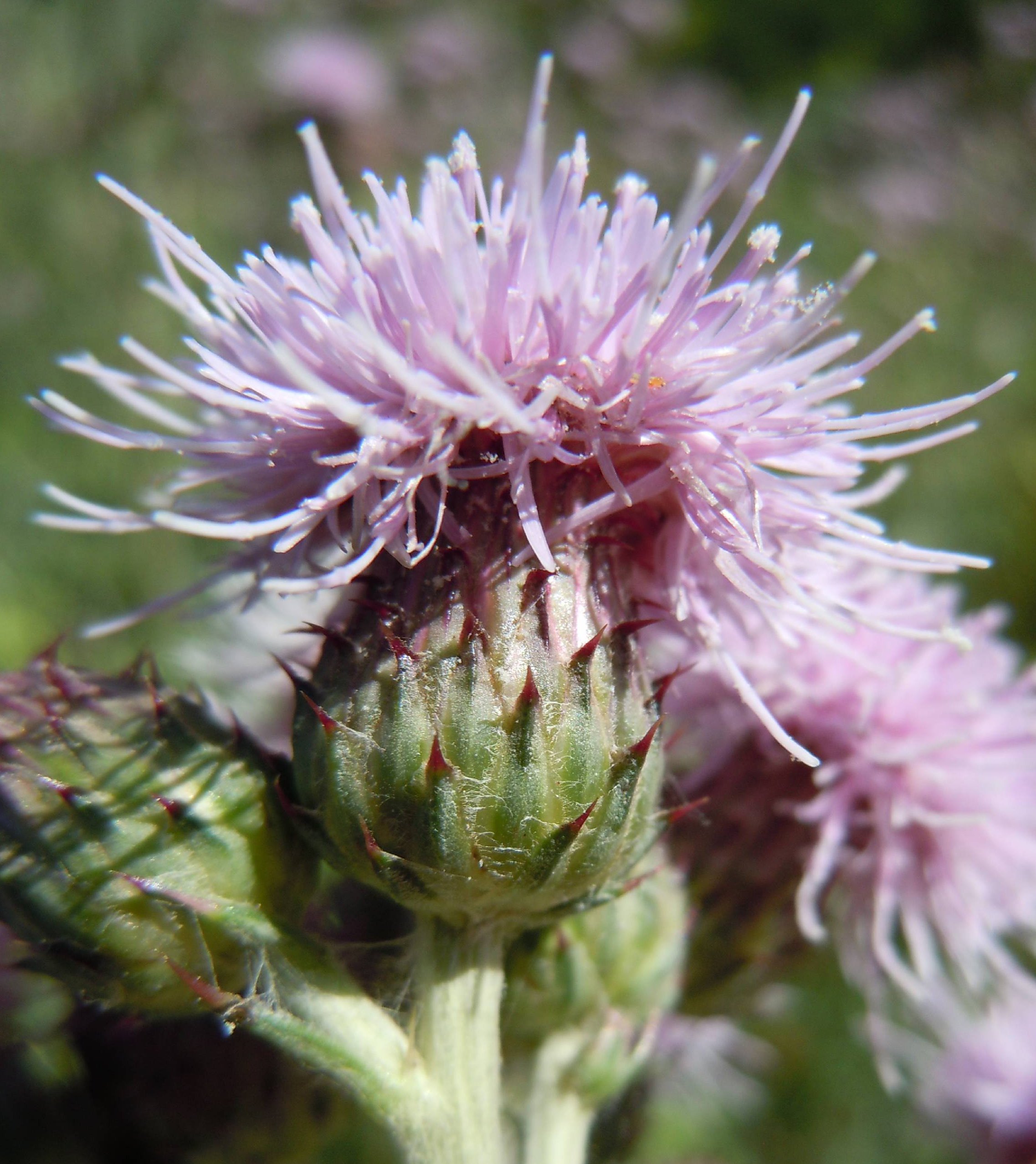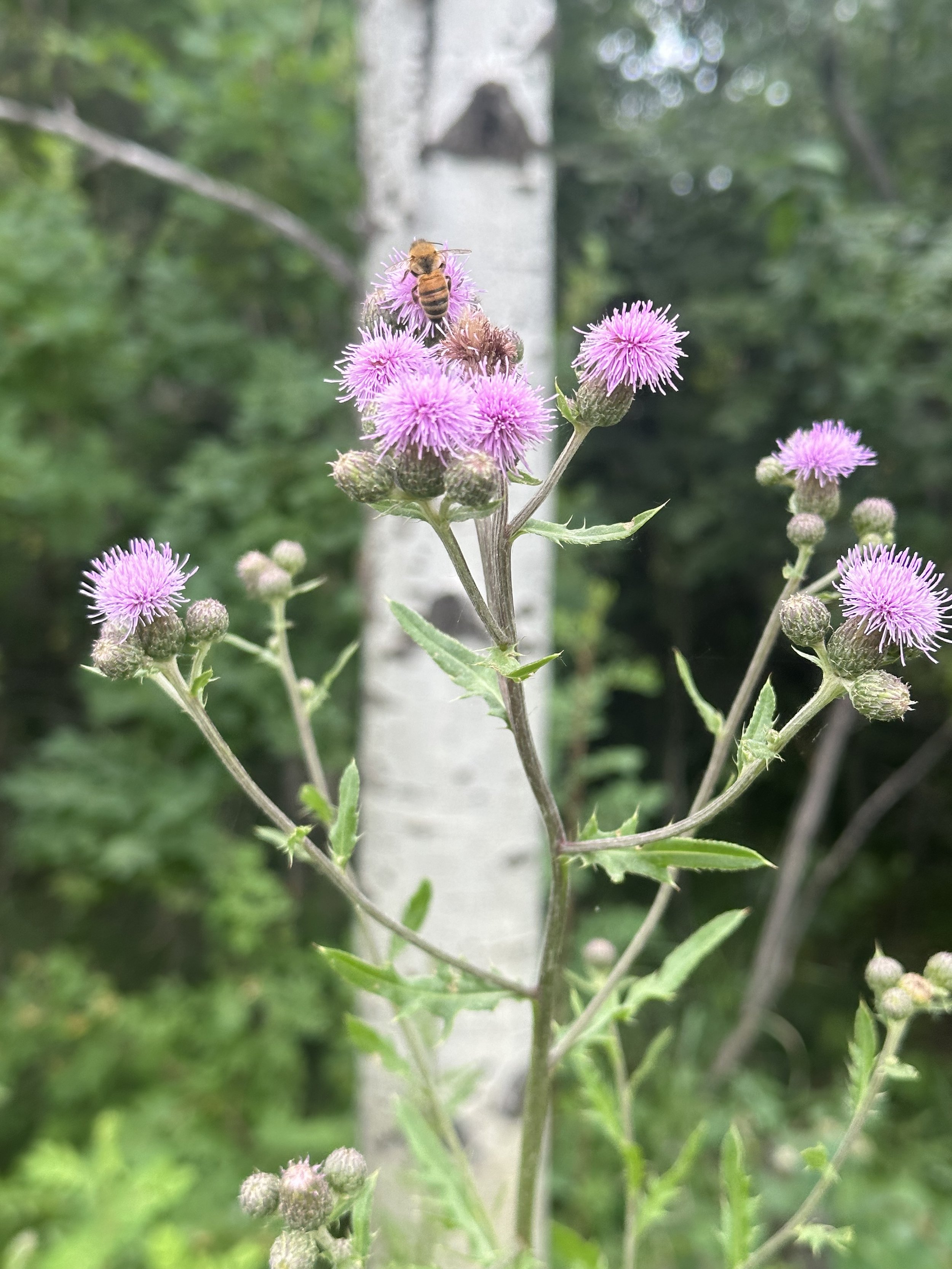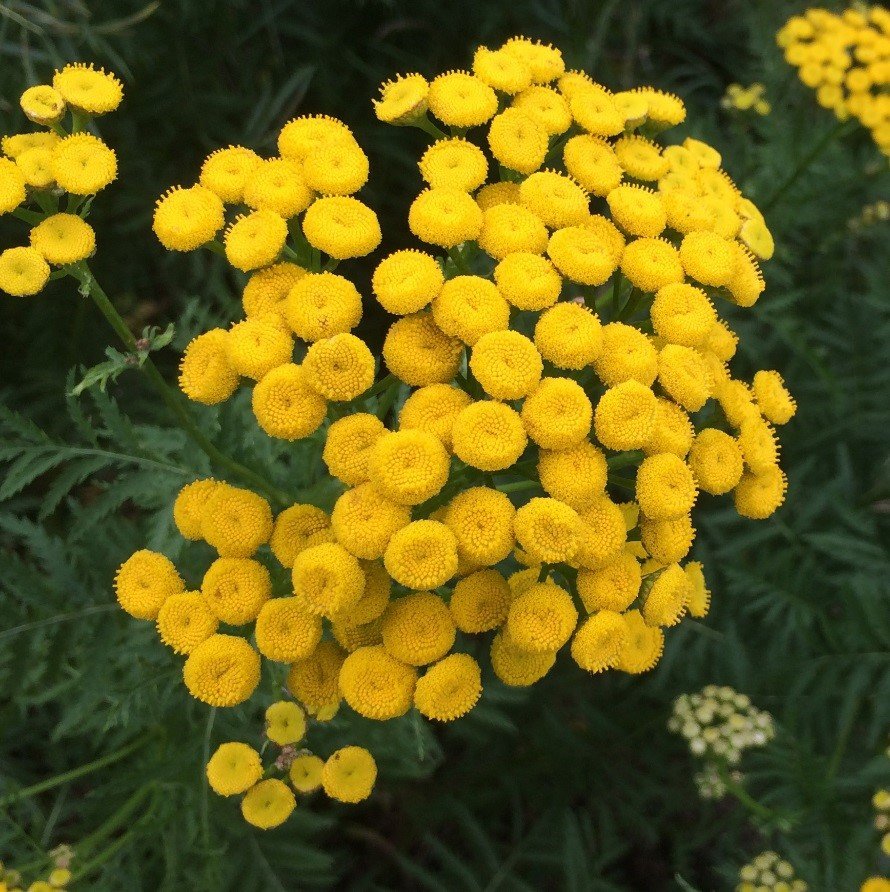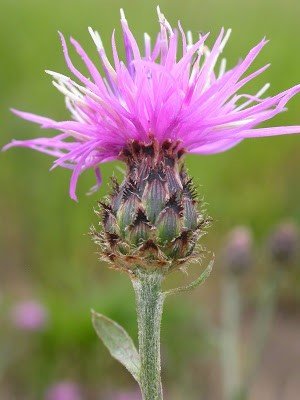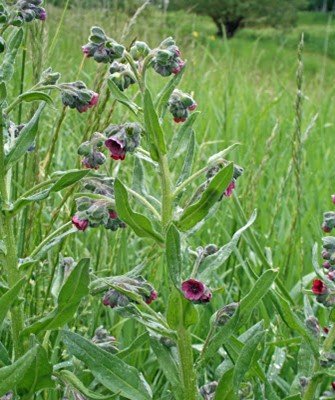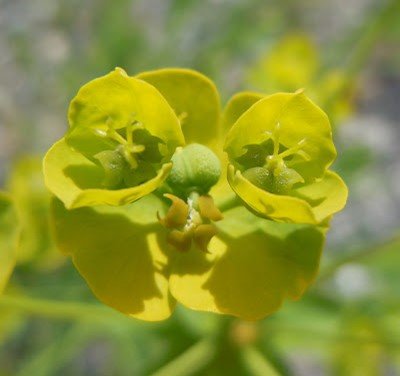Eek! A Spider
/Wolf spider (Photo: Flicker sharing, Thomas Shahan)
Arachnophobia, a fear of spiders, is a common and powerful fear. Many people fear spiders more than other common arthropods like cockroaches, centipedes, and wasps. We all hear stories about the danger of being bitten by black widow, brown recluse, or hobo spiders. All too often, this fear is the result of a lack of knowledge about spiders, and the role they play in the environment.
What’s a Spider?
Spiders are arachnids, in the order Araneae, with four pairs of legs, no antennae, no wings, and only two body regions (compared with insects that have 3 pairs of legs, antennae, often winged, and three body regions). The head and thorax of spiders are combined into a cephalothorax which is attached by a narrow pedicel to an unsegmented abdomen. The abdomen has spinnerets at the posterior end, from which silk for spider webs is spun.
Spiders are predatory, preying on many kinds of insects and other arthropods. Spiders have a pair of hollow pincers, called chelicerae, connected to poison glands -- while all spiders have poison glands, only a few are poisonous to humans. When spiders capture prey, their bite injects venom and digestive fluids, paralyzing their victim. With the prey immobilized, the spider sucks out the innards leaving only an empty shell. Other spiders crush their prey, bathe the tissues with digestive fluids, and crew the entire mass until only a little ball of indigestible material remains. Small wonder spiders are a favorite theme for Halloween and other horror venues.
A pair of pedipalps on the head, resembling legs, distinguish female spiders, which are also usually larger than males. Females spin silken egg sacs in which they lay masses of eggs. After a period of time, young spiderlings hatch and emerge. Young spiders resemble adults, growing by periodically molting their outer shells 4-12 times to reach the adult stage. If you see what looks like a dead spider, it’s often only the molted shell.
Spiders Eat as much as Humans?
Spiders prey upon insects in vast quantities. In research recently published in the Science of Nature, Martin Nyffeler of the University of Basel, in Switzerland, and Klaus Birkhofer of Sweden’s Lund University, attempt to put some numbers on spiders’ dining habits. Their conclusion was that there are 25 million tons of spiders around the world and that, collectively, these arachnids consume between 400 million and 800 million tons of animal prey every year. This puts spiders in the same predatory league as humans as a species, and whales as a group. Each of these groups consumes some 400 million tons of other animals annually.
Spider Identification
Spiders are abundant with some 50,000 known species. Spider identification keys in on such physical traits as the position and number of eyes, the overall shape, length of legs, and form of the spinnerets, as well as behavior, specifically web-spinning or not.
WEB SPINNING SPIDERS
Black Widow Spider
The black widow spider, and its relatives in the genus Latrodectus, are easily recognized by the reddish-to-orange hourglass marking on the underside of the abdomen. Black widow spiders get their name from the fact that the female frequently eats the male after mating, a practice not uncommon to several other species of spiders. In general, a docile, non-aggressive spider, unless the female is protecting the egg sac. The bite is a neurotoxin and very painful. The pain occurs less at the actual bite but rather in the abdomen and limbs. Physiological effects are an accelerated heartbeat, increased blood pressure, breathing difficulties, and paralysis. Although the bite of a black widow is rarely fatal it is important to seek medical attention. Antidotes are commercially available.
Photo (first on left): Female Latrodectus hesperus/western black widow, by Ken-ichi Ueda-wikimedia commons, https://www.inaturalist.org/photos/121, CC BY 4.0.
House spiders
House spiders are among the most common spiders found indoors. They are found worldwide and is common throughout the United States and Canada. Two of their lateral eyes touch each other on each side of the cephalothorax and are well separated from the other four eyes. Female house spiders have bodies which are 1/8 to 3/8 inches long and the abdomen is often covered with dirty whitish or brownish hairs arranged somewhat like chevrons. House spiders spin irregular sheet webs in protected places in the corners of rooms, ledges, windows and under furniture. Unlike black widow spiders, males and females are often observed living together in the same webs. Webs of house spiders often have dead insects entangled in or lying beneath them.
Photo (second on left): © Tom Meyers.
Orb-weaver spiders
Orb-weaver or garden spiders are generally large, with bodies ½ -1 inch long. They often have conspicuous black, white, yellowish or orange markings. These common spiders are often seen in late summer or fall. They are able to construct large, conspicuous webs with a central hub from which spokes radiate. All this is constructed in less than an hour. The female sits in the hub, waiting to detect movement that signals prey has been captured. After mating, the female seeks a protected place to lay a cluster of eggs, some 300 to 800, which will hatch the following spring.
Photo (3rd from left): orb weaver in the family Araneidae: © 2007 RKD Peterson, courtesy of Montana State University.
Funnel web spiders
Funnel web spiders all have eight eyes about the same size and slightly separated, bodies about ½-inch long, and usually two dark longitudinal stripes on a grayish cephalothorax. The most distinguishing characteristic is a long posterior pair of spinnerets. Funnel web spiders spin flat webs of silk which extend into tubes or funnels into which the spiders retreat for protection, hence the name. The webs are often found in shrubbery near buildings, or in the angles of windows, doors or buildings. They reach the peak of their population in late summer and fall and often enter buildings at that time. Most funnel-weavers die after the first frosts. Winter is passed in the egg stage.
American Grass Spiders (Genus Agelenopsis) are brownish-black with stripes running from front to back with an oblong abdomen with two white stripes broken into sections. The head has a lighter stripe running down the middle, dividing the two dark stripes.
Photo (4th from left) American grass spider: Judy Gallagher – Wikimedia commons; https://www.flickr.com/photos/52450054@N04/8058527267/, CC BY 2.0.
Aggressive house spider (Hobo)
The aggressive house spider, Eratigena agrestis, is becoming one of the most common spiders in the Northwest. This spider was first reported in the Seattle area in 1930. It is a prevalent spider in basements and in window wells of houses. It rarely climbs vertical surfaces and is usually found only on the ground or lower floors. Experts have called it the aggressive house spider because it bites with little provocation when cornered or threatened. The aggressive house spider is important medically because of its ability to cause necrotic spider bites. (A necrotic bite causes tissue to die.) The aggressive house spider is a long–legged, swift running member of the funnel web spider family. The brown abdomen has a distinctive yellowish chevron pattern. The legs are a uniform brown without the darker brown bands that other nonpoisonous funnel web spiders have.
Photo: Female hobo spider (Eratigena agrestis). Photo by Laurie Kerzicnik, MSU Extension
Non Web-spinning Spiders
Wolf spiders
Wolf spiders are medium to large spiders, and are usually hairy, brown or black, with long legs adapted for running. They have good eyesight – an adaptation for chasing down their prey, paralyzing it and feeding. Webs are not used by wolf spiders. Female wolf spiders carry the egg sac attached to their spinnerets until the eggs hatch. They then carry the young spiderlings about on their backs for a time. Some of the largest spiders encountered in Montana are in this group. This group is very mobile and may be found moving into houses in the fall in search of prey. Wolf spiders are medium to large spiders, and are usually hairy, brown or black, with long legs adapted for running. They have good eyesight – an adaptation for chasing down their prey, paralyzing it and feeding. Webs are not used by wolf spiders. Female wolf spiders carry the egg sac attached to their spinnerets until the eggs hatch. They then carry the young spiderlings about on their backs for a time. Some of the largest spiders encountered in Montana are in this group. This group is very mobile and may be found moving into houses in the fall in search of prey.
Photo (first from the left): Ground wolf spider, Trochosa terricola; © Aleksandrs Balodis, Montana Field Guide
Jumping spiders
Jumping spiders, like wolf spiders, do not spin webs to capture prey, but rely on quickness and visual acuity. Jumping spiders and wolf spiders have two eyes much larger than the other six, probably an adaptation to help them better see their prey. Jumping spiders are small to medium sized spiders, usually stout bodied, short legged and hairy. They frequently have contrasting black, reddish, or yellowish markings. They are very agile, pouncing and feeding on small insects about the home. They are often seen on screens or near doors or windows.
Photo (second from left): a jumping spider (Platycryptus sp.) © 2007 RKD Peterson, courtesy of Montana State University.
Crab spiders
Crab or ambush spiders are somewhat crab-like in shape and walk sideways or backward. They are medium sized and often brightly colored, with abdomens that are usually wide at the posterior end. The two front pair of legs are usually longer and stouter than the two hind pair and crab spiders often hold their legs poised to trap insect prey. They have eight relatively small, well-spaced, light colored eyes. Crab spiders are usually found outside in gardens and landscaping where they spin no webs but forage for their prey or lie in ambush on blossoms or other parts of plants. They are able to gradually change colors to match flowers for camouflage. Many species in this family are highly camouflaged. They get their common name from their crab-like behavior, which is generally described as using their front two pairs of legs to manipulate food while moving side to side with their four hind legs.
Photo (third from left): a crab spider in the family Thomisidae, © 2007 RKD Peterson, courtesy of Montana State University.
Brown recluse spiders
Brown recluse spiders are easily recognized by a key characteristic: six eyes arranged in three pairs forming a semicircle. The fiddle on the top side of the spider is not always clear and found in many other spiders. Most other spiders have eight eyes variously arranged. Adult female brown recluse spiders are about ½-inch long (legs excluded); males are somewhat smaller. Both female and male brown recluse spiders can bite people and inject venom. Individuals react differently to bites. A stinging sensation is usually followed by intense pain. A small blister arises and a large swollen area around the bite becomes congested and swollen. While bites of the brown recluse are generally not fatal, they result in a local necrotic lesion that heals slowly, leaving an ugly scar. There are other spider bites that give a similar reaction, and these are often misdiagnosed by well-meaning physicians as brown recluse spider bites. Presently Brown Recluse spiders are not documented in Montana and the Northern Rockies.
Daddy Longlegs (Harvestman)
Daddy longlegs, also known as harvestman, are not spiders, but in the order Opiliones comprising more than 6,000 species of aranchnids. Their extremely long narrow legs and small bodies, that appear as a single segment, are characteristic. The body is a simple oval, and it’s usually hard to tell where the “head” ends and the segmented “abdomen” begins. Daddy longlegs are harmless, lacking fangs and do not produce venom. Some species have mouthparts that form an enlarged pincer-like tooth that might slightly pinch, but none bite. Daddy longlegs resemble cellar spiders (Pholcus phalangioides), a long-legged spider, which have legs 5-6 times longer than the body and a distinct “waist” betwen the cephalothorax and abdomen. Another way to distinguish living specimens of these two is from their web-spinning habits. Daddy longlegs do not spin webs and are seen running agilely over the ground; in contrast, cellar spiders do spin webs, where they are almost exclusively found. If they are knocked off their web, cellar spiders move clumsily on the ground.
Photo: Harvestman, © Donna Brunet, courtesy of Missouri Department of Conservation
Management- What to do about spiders?
Spiders are beneficial, preying on insects, so control measures should only be used in situations where they become intolerable – for instance, where black widow or other spiders pose a threat to individuals or pets. A broom or vacuum cleaner used to dislodge and move outside or crush spiders will suffice. Spiders found outside under eaves and in corners of residences can be removed/relocated by use of a broom. Keep spiders out of your home by:
Weather-strip and caulk around doors, windows, and utility lines.
Fill in cracks in siding and around the foundation; reset loose bricks and siding.
Keep debris and wood piles away from buildings.
Inspect firewood for spiders and egg sacs before bringing indoors.
Reducing clutter in storage spaces as boxes and other objects stored in undisturbed basements, crawlspaces, garages, and closets provide hiding places.
Protect yourself from spider bites when working around potential spider habitats by wearing gloves when gardening, moving wood piles or debris, or placing your hands into dense vegetation. Wear long-sleeved shirts and pants if you work around crawlspaces or cedar-shake shingled rooftops where spiders can hide.
Spider Sniffing
Ever wondered how many spiders might be watching you? If you have a flashlight and darkness, you can spot them by the green glow of their eyes.
Many animals that hunt at night have an iridescent layer behind their retinas called a tapetum, including cats, dogs, racoons and some birds. It improves their night vision, and also causes “eyeshine.” Most spiders have eight eyes and four of those eyes have tapetum, so go find them.
To go spider sniffing, hold a flashlight level with your eyes. Spider eyeshine is returned at a relatively narrow arch so this flashlight position is key to spider detection. Sweep the light across outside lawn and other dark spider-lurking spots. If you see a bright point of eerie green light, that’s your flashlight beam reflecting off a spider’s eyes.
Arachnophobes, meanwhile, should consider this: without spiders, there would be an awful lot more other creepy-crawlies around.
Sources
Primary source: Spider Identification and Management.Montana State University Extension, MT199210, 4 pages.
“Spider Bites”, Economist, March 18, 2017.
Edward John Bechinski, Dennis J. Schotzko, and Craig R. Baird. 2010. Spiders around the home and yard. Idaho Extension Service. 28 pages














